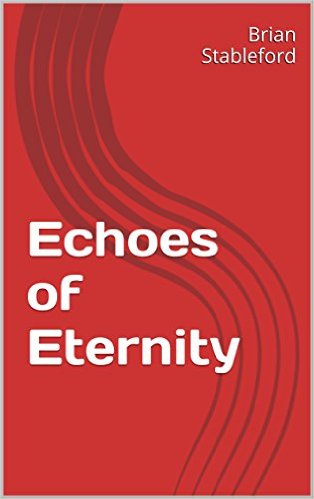Review by Sally Startup
Set in Paris in 1830, this is a tale with a complicated weave. It deserves
attentive reading. There is much interesting historical detail. There
are threads from Brian’s previous work and that of H. P. Lovecraft
and Edgar Allan Poe. And there are some mind-expanding ideas.
On the eve of Quasimodo, five people meet in Notre Dame Cathedral. Victor
Hugo, Paul Lacroix and Blaise Thibodeaux are all developing ideas for
the books they plan to write. The Byronic violinist, Doctor Prospero,
has arrived in Paris only recently and has been searching for the lost
sheet music composed by Erich Zann. These four are all interested in the
legend of the Quasimodo Peal, and are willing to experiment in order to
discover more.
Brother Barnabas, on the other hand, is a Dominican who has been trusted
by his superiors with glimpses of forbidden literature. As a child, he
heard the Quasimodo Peal, before revolutionaries melted down all but one
of the bells for cannon. However, he has no conscious memory of what they
sounded like, much to the disappointment of Doctor Prospero. After what
happened to the violinist Erich Zann, Barnabas is also well aware of the
risk taken by those who go actively looking for evidence of such things
as Nyarlathotep, the crawling chaos.
Being a keen reader myself, I could not help finding metaphorical connections
between the magic of literature and the kind of magic that interests Prospero
and Thibodeaux. There are plenty of clues that the author agrees. However,
it is through the art of music, its echoes and its effects on the emotions,
that these characters wish to test their theories. And thoughts can be
infectious, however they are transmitted, especially when they connect
with minds already primed to receive them.
There are great many ‘what if?’ ideas mentioned within this
story (my personal favourite being, ‘what if artistic creativity
were transmitted by invisible organisms?’). The significance of such
ideas to physical and metaphorical worlds is likely to depend on one’s
point of view. Since the main characters are all conscientious thinkers,
their discussions and internal thoughts are described at length. The progression
of these theories as they are revealed provides a slowly developing, yet
powerful, narrative tension.
When the harmonies of Hell are performed, what effects do they have,
whom do they affect, and when? Several characters suggest possible answers.
For myself, I found the resultant tale initially chilling, then ultimately
reassuring and encouraging.
|


